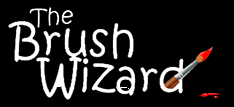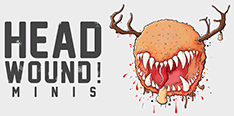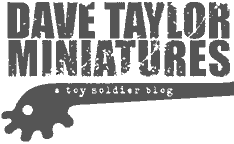It was made by those who are Dead.
And the Dead keep it.
The way is shut.
Besides, if I keep my face slack and let my eyes roll back while I'm quoting this, I might freak someone out.
Advantage: Iyanden
Ok this week's focus is on some Wraithblades. I love how they look as models, and I have to add that the Wraithguard/Wraitblade are amazing models, to the point where they almost have too much detail.
Also I am mounting them and the Wraithlords on their bases in preparation for some painting action. Now that we're heading into the fall, we'll be getting into better airbrushing weather, so I'm looking forward to that.
Actually, since Greg is caught up following his baser instincts, I thought I would share some basing tips.
In general, I prefer to spend as little money as I can on all the support items for hobbying, whilst still assuring a quality that won't compromise the end result. So, I'm always looking at cheaper alternatives for things like basing, carrying cases, and whatnot.
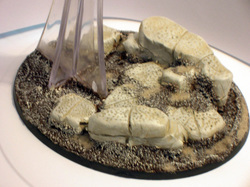
For example, here's a flying base with ruins on it.
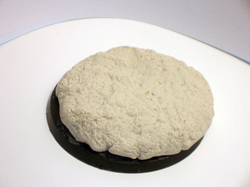
1. Optional: I often times drill holes in my plastic bases to give the clay something to hold on to.
2. Pinch off a piece of clay approximately the size of the tip of your thumb.
3. Work it into a shape that you are happy with that fits on to a base. Options are circular, wedge, basically anything that sort of looks like a rock to you.
4. Press it down hard into the base, assuming you used the optional step. Step 1 is recommended for larger bases.
5. Now the fun part, adding texture. From your kitchen, get a piece of aluminum foil and crinkle up into a ball (approximately 1.5 inches in diameter). You'll notice that there's an interesting pattern of ridges and whatnot on the surface. You are now going to imprint that surface texture into your clay.
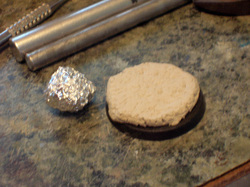
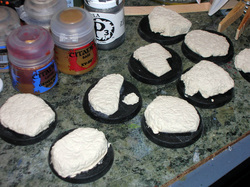
10. There are a couple of different options now. You can go ahead and paint up your bases and finish them off, attaching your figures later or, as I often do, attach the figures pre-painting.
Now, there's a couple of things that should be mentioned at this point. Just gluing figures on the bases with a super glue, will in most cases be Ok for display purposes. But if you are going to game with your little works of art, I highly recommend "Bracing For Impact" (BFI).
What does BFI mean? Well quite simply, acknowledge that while you're having fun, stuff happens.
Someone accidentally knocks your figure over. Your figure gets placed on a precarious piece of terrain, unicorns swoop in and try to run off with your newly painted HQ.
Accept that those kinds of things are going to happen. Assuming that, then understand that just gluing your figures onto bases is probably going to set you up for heartbreak later on. So take one more extra step and reinforce the join.
Now you can do this step before painting or after, it doesn't really matter, though sometimes you may have to touch up things if you take the post-painting option.
In any case, drill through the bottom of the feet of your figures and at least one spot on the base. The clay is very good at handling this, so you shouldn't worry about hurting your masterpiece of stone.
I should also mention that the air dried clay I use is polymer based, if I am remembering correctly.
Anyway, drill holes in both parts, about the thickness of a paper clip.
Why?
Paper clips are cheap.
Clip a small rod from your paper clip and then glue it to your figure and your base, i.e. stick the rod into the hole, put some glue on the base and assemble. I suppose if you wanted to, you could glue one end of the rod into one part, let that dry, and then do the other, but I don't really think that's necessary.
Once that's done, then you can have the confidence that your guys/gals are going to hang around a little longer and you won't have to be concerned about every little tip or bump.
That makes it easier to have fun, which is why we do this.
Ok, I think that's it for now, until next time.
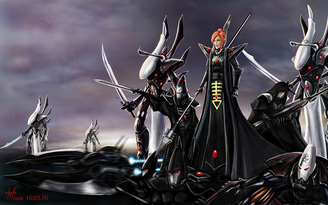
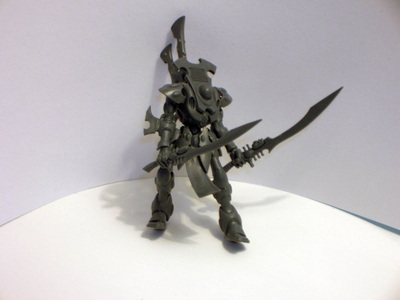
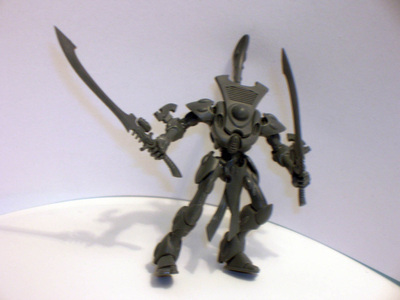
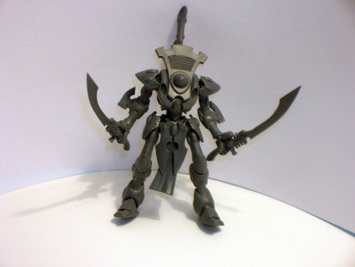

 RSS Feed
RSS Feed






